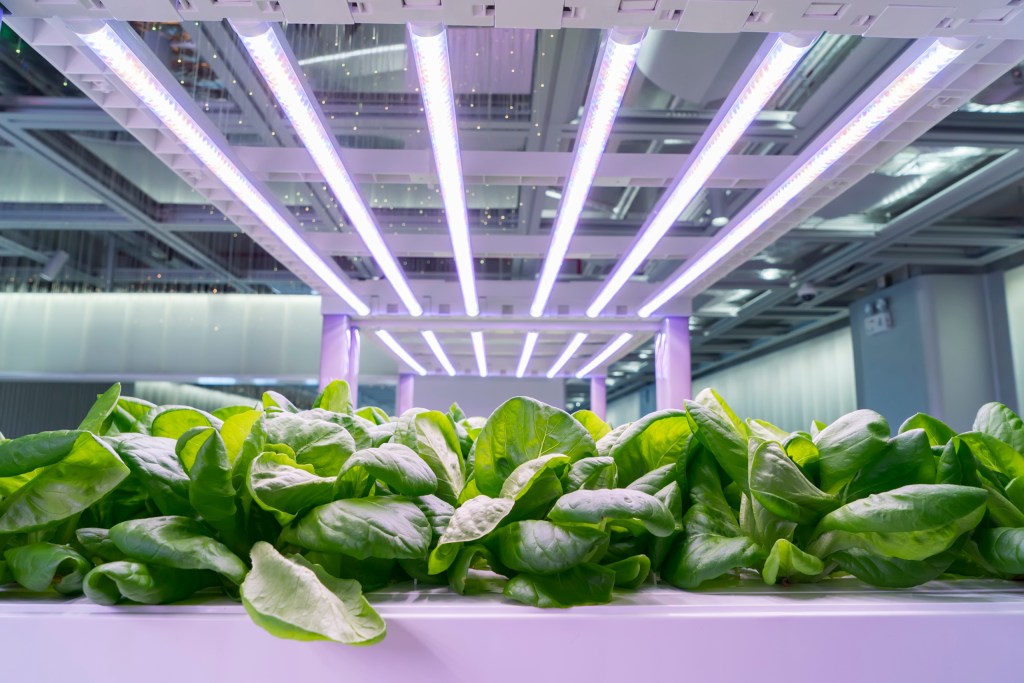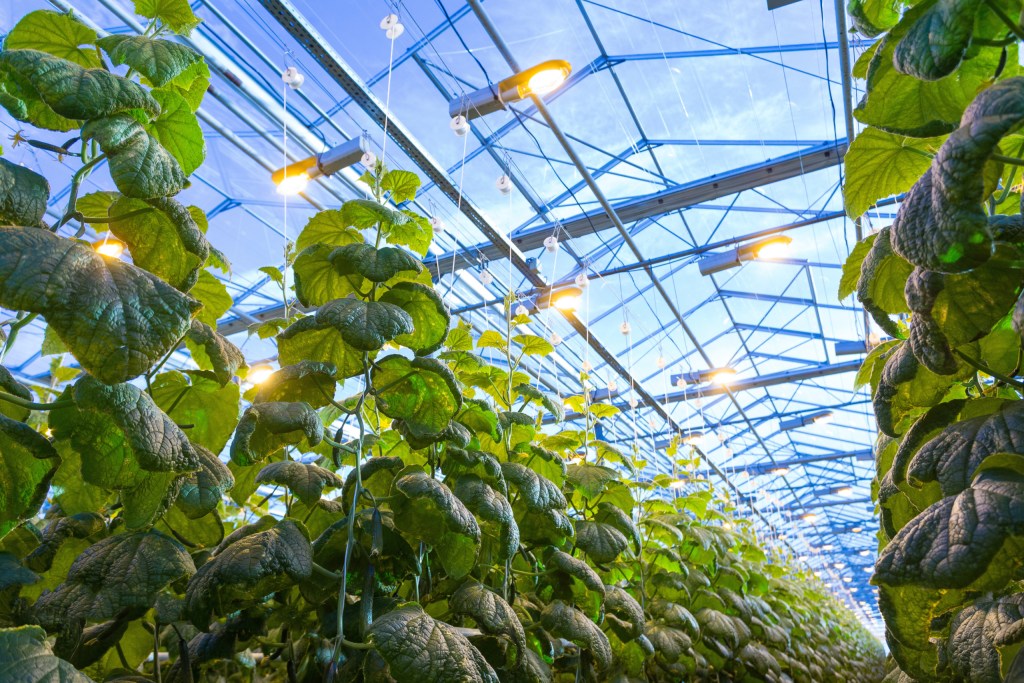It may seem obvious, but plants require light to grow. That just blew your mind, we know. However, many plant enthusiasts do not provide adequate light for their plants, inside a greenhouse or outside. Greenhouses require light to promote crop growth and yield, playing the main role in photosynthesis. Yet greenhouse lighting requirements can be confusing, including the types of lights, amount of light needed each day, and the light spectrum.
In the summer it is crucial to provide enough shade for your plants. In winter, lighting requirements change. We’ll provide you with greenhouse grow light information to help your greenhouse flourish year-round.

What light is needed for plant growth?
The best balance of light for a plant to grow well is a split of cool and warm light, replicating natural sunlight. Depending on the type of plant and the stage of cultivation, you will need a lamp with a specific spectrum range. A spectrum is a range of different light wavelengths being emitted from a light source. Other colors of light can help different plants achieve unique goals. For example, next time you buy bulbs, take a look at the packaging. You will most likely see a number, something like 2700K or 3000K; these numbers indicate the coolness or warmth of the light spectrum.
In general, plants need more blue light when growing and maturing and then need red and orange light when blooming and producing. Let’s take a look at the different types of greenhouse lights and what spectrum they produce.

The types of greenhouse lights
You will encounter four main types of lights that are normally used in greenhouses. You have probably heard of some of these before (or at least their acronyms):
- Incandescent
- High-intensity fluorescent (HIF)
- High-intensity discharge (HID)
- Light-emitting diode (LED)
Incandescent
You might not see these types of lights anymore, but at one point they were the standard in homes around the country. However, governments around the world have begun phasing out these lights because they are not energy efficient. They aren’t great for using in a greenhouse, either. Incandescent bulbs work by heating a filament inside the bulb to glow with visible light. Because of the heat they give off, you should not place them close to the foliage.
Overall, these are the cheapest option (if you can find them) and while they are a good source of red wavelengths and could trick your plants into thinking the sun is still up, there are far better options for your greenhouse that aren’t expensive.
High-intensity fluorescent
In comparison with the incandescent bulbs that waste heat, high-intensity fluorescent (HIF) bulbs are much more efficient by converting electricity into light without wasting heat. On the color spectrum, these bulbs produce a lot of blue light and not a lot of red, while also providing a full white light spectrum. If you go with this option, find a T5 fluorescent bulb as these produce three times more light in both blue and warm spectrums.
Overall, HIF bulbs are a good option for a greenhouse that might not get a lot of natural light. They are useful for propagating and grow rooms and, if you have a large space, the energy efficiency of these bulbs could be useful in saving you money.
Light-emitting diodes
Going up on the efficiency scale, light-emitting diodes (LED) bulbs are more expensive than the other options but use half the electricity and last five times longer than fluorescent bulbs. Their light intensity is also much greater and produces a full spectrum of light. They are also tiny compared to other bulbs making them very easy to install.
Overall, LED lights are one of the best options for a greenhouse because they maximize the blue and red light spectrum, which enables photosynthesis. LED bulbs can also be used for all stages of growth.
High-intensity discharge
If there is one type of greenhouse light we recommend, it is high-intensity discharge (HID) bulbs. They are efficient at producing light and increasing light intensity; many growers use HID lights in their own greenhouses. There are two main types of HIDS: high-pressure sodium bulbs, which are used to promote growth and flowering and are rich in red light; and metal halide lights, which are used to support vegetative growth and provide more blue light.
However, there are two main disadvantages with HID lights. First, they are not as practical compared to LEDs because they must be installed on heavy ballasts that are sold separately, plus they are quite bulky and take up a lot of space, not ideal if you have a tiny greenhouse. Second, HID lights produce a lot of heat so you must place them between 30 to 36 inches away from your plants. Again, not ideal if you don’t have a lot of space.
Final thoughts
Plants require different wavelengths of light in different stages of growth. While many greenhouse lights will help with growing your plants, some are better than others. If you have the space, time to set them up, and want to hand over the money, HID bulbs are the best option. If you don’t have a lot of space in your greenhouse or want a more practical option, LEDs will work wonders. However, each plant is different; if one type of bulb doesn’t meet your goals, then test out another one and keep trying until your greenhouse is blooming.
Editors' Recommendations
- A beginners guide on what to grow in your greenhouse for a thriving garden
- Small greenhouse tips: 5 ways to make the most of limited space
- The ideal greenhouse temperature and humidity settings for every season
- 5 fantastic backyard design apps to help you craft your own personal oasis
- What you need to know about growing sugar snap peas in containers


